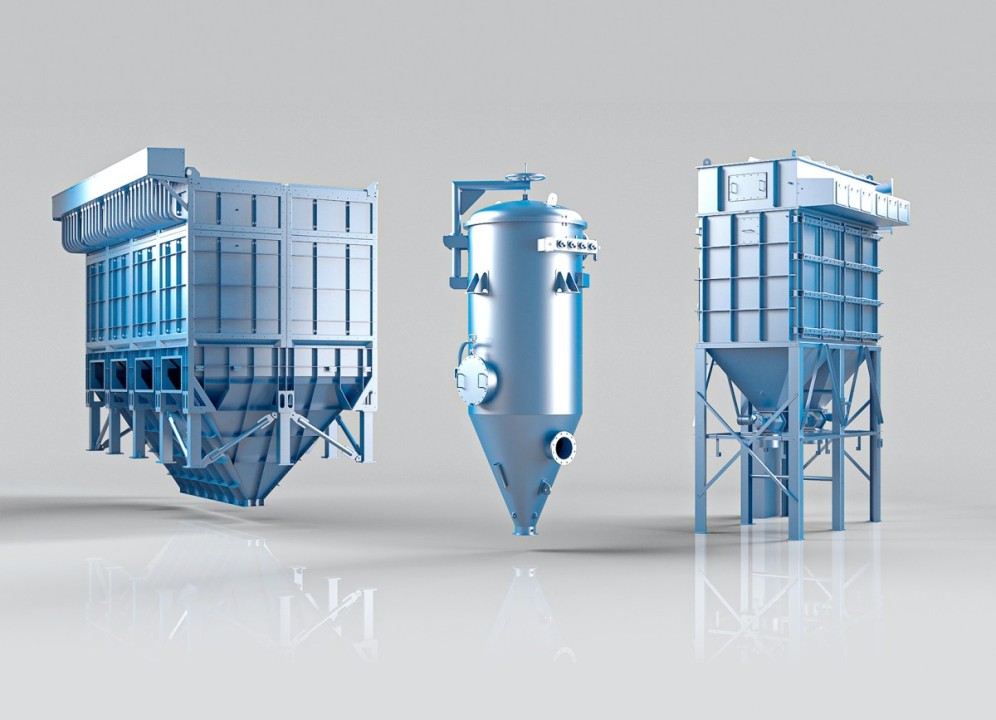Dust Collection System: What Is It? How Does It Work?
Date: 2023-08-21 Categories: Company news Views: 223

Dust collectors are responsible for maintaining safe air quality for humans and production machinery. These industrial systems are implemented in industrial complexes, production facilities, and even workshops around the globe. There are several types of dust collectors, and it is crucial to determine the right system for your facility.
What is an Industrial Dust Collector?
An industrial dust collector gathers dust and fumes from the manufacturing air environment. The collected air stream may contain nuisance particulates or dangerous fumes. Many facilities rely on dust collectors to manage processing dust and fumes throughout the manufacturing process.
An industrial dust collector gathers dust and fumes from the manufacturing air environment. The collected air stream may contain nuisance particulates or dangerous fumes. Many facilities rely on dust collectors to manage processing dust and fumes throughout the manufacturing process. Major regulatory organizations require proper dust management. It is valuable to note dust collectors differ from industrial vacuum systems. Vacuum systems clean or convey materials, while dust collectors provide total facility air filtration.
How Do Dust Collection Systems Work?
There are a variety of dust collection systems, and each serves a distinct function. The type of collector mainly used depends on the facility’s manufacturing process, the volume of dust, production area, and application. The best dust collection system will be custom to your manufacturing needs. A dust collector removes particles from the air by forcing them through a succession of filters. Once the air has reached the proper emission standard, it is released into the atmosphere or recirculated into the facility environment.
Components of a Dust Collection System
Dust collection systems generally have three components that work together: the dust collector, ductwork, and air purifier.
Ductwork
The ductwork must be designed correctly for the collection system to function. The proper size of the ductwork will depend entirely on the airflow requirements, the number of machines in service, the length of ductwork necessary, the blower size, and the size of the particulates to remove.
Fan/Blower
This component pulls contaminated air into the system to be purified. There are two basic types, axial and centrifugal. An axial system has propellers, while the centrifugal system has wheels within a housing.
This element will also require the proper adjustments. The first determination is the amount of air that must be moved. It’s also necessary to calculate the static pressure throughout the system, the temperatures, the amount of debris in the air, and the humidity.
Dust Filter
The dust filter is the purifying component of a dust collection system. The air is forced through the filter. The air-to-cloth ratio is the amount of air that passes through a square foot of the filter. A high-quality filter system will have a lower percentage. Filter fabrics can be customized for chemical resistance, withstand high temperatures, and abrasion resistance. Due to the variety of filter fabrics, it is recommended to contact a trusted manufacturer to find a suitable filter fabric for your facility.
Types of Dust Collector Filters
These are the most common options for industrial dust collection filtration.
Baghouse
Baghouse dust systems utilize long cylindrical bags to filter air. The contaminants are collected around the filter as clean air passes through and exits. Pressure differential switches are implemented to monitor the filter’s conditions and activate the cleaning as needed.
These systems are most useful if the facility’s processing temperature exceeds 250 degrees Fahrenheit or if the airstream has adhesive or sticky particulates. It’s also a heavy-duty option for environments that have a large dust load. These filters are durable and have an exceptional service life. These systems are the most used due to their 99% efficiency ratings.
Cartridge
These dust collection systems replace the bags with cartridges open at one end. Cartridges are lined with pleated filter material and can be cylindrical or oval-shaped. The dirty air is passed through the cartridge. Cartridge systems are commonly used when there are space constraints or within indoor filtration systems.
Inertial Separator Filtration
These systems collect the particles by shifting the airstream. The particulates then compile into a small part of the gas flow. The most widely used form of inertial filter is the “cyclone,” which creates a vortex within the system. This system pushes the particulates towards the outside of the filter, where they remain.
Wet Scrubbers
Wet scrubber filtration systems are incredibly successful when used as a pre-filter. They operate by utilizing water droplets to capture particulates. The moisture causes the particle size to increase and become much easier to extract from the air.
Electrostatic Precipitators
The electrostatic force separates dust from the air inside an electrostatic precipitator. The combination of direct current high-charge electrodes and grounded collection electrodes forms an ionized field. As air passes through this field, it becomes negatively charged. This charge forces the participles to gather on the grounded electrodes. When particles lose their charge, they are removed from the electrodes through vibration. The contaminates are then collected.
Industrial Dust Collection Filter Media
The air filter’s composition, also called media, is the filtering portion of your system. The media needed is determined by the application; however, the most common are:
Polyester Impingement Air Filter Media: This synthetic air filter media is used for its high strength and resiliency. This material is suitable for applications that deal with a high volume of pollutants or contaminants.
Active Carbon Fiber Media: This system is excellent for preventing fumes or odor build-up in the recycled air. The fumes are removed through absorption.
Electrostatic Polypropylene Media: Synthetic air filter media uses static charge & airflow to remove contaminates.













